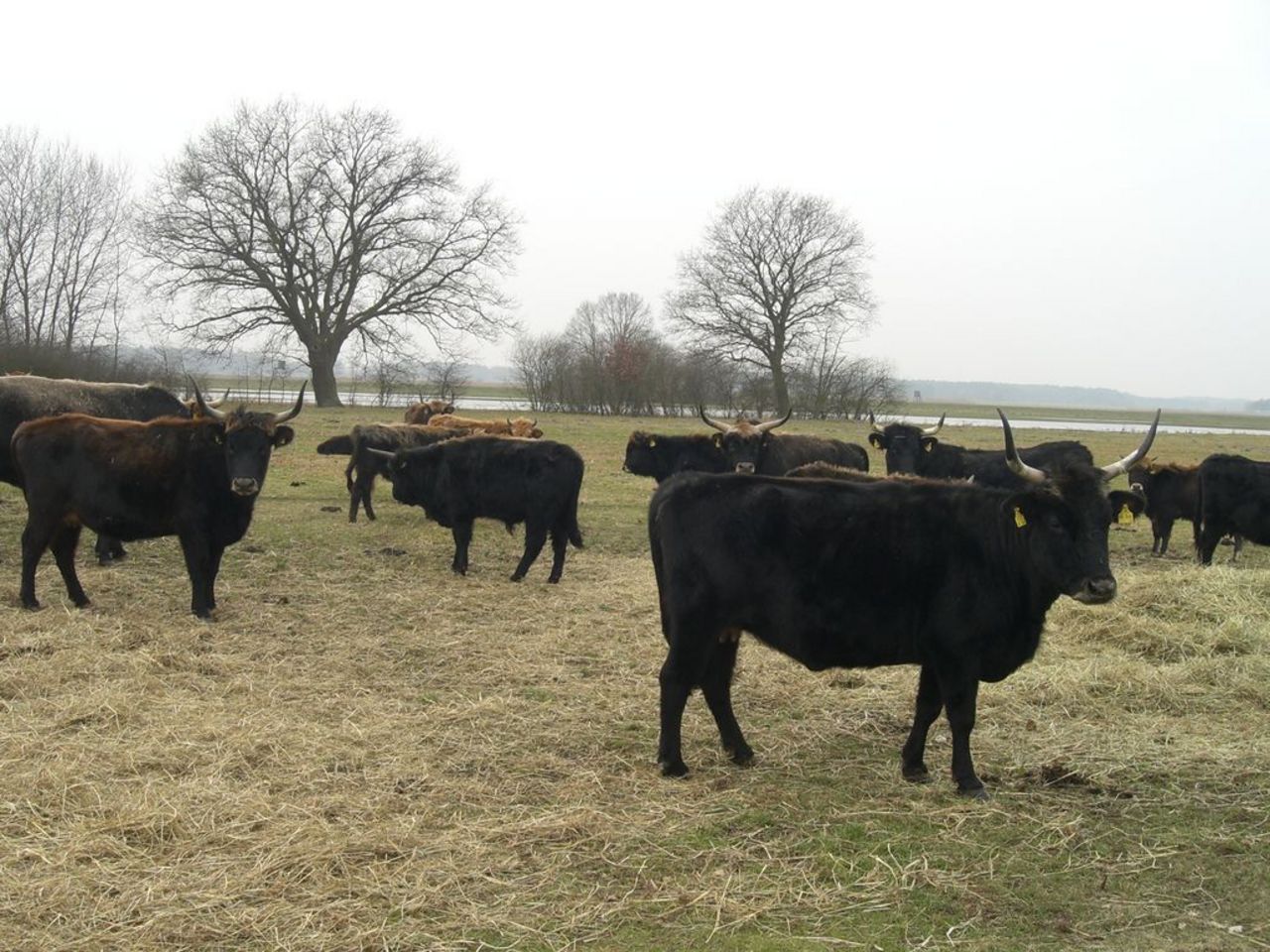Project
Production of beef with endangered cattle breeds in nature protection

Trail to implement endangered cattle breeds in extensive grazing systems in wetland with consideration of the CAP and innovative, sustainable production pattern in the bioshere reserve "River Landscape Elbe"
Goal of the on-farm projects was the development and assessent of integration of old endangered dairy cattle breeds and landscape management into milk producing farms.
Background and Objective
The project shall give an answer about the potential of old endangered dairy cow breeds in wetland management in comparison of typical "Heck cattle" as extensive beef breeds.
Approach
Three different old endangered dairy cattle breeds have been introduced into two farms (organic, conventional) and used for wetland management in the biosphere reserve "Flusslandschaften Elbe". There, they have be monitored 3 years in ability to maintain the wetland, the animal health, the productivity (beef) and the impact on the farms.
Our Research Questions
- How are integrated old dairy breeds into the farms?
- How is the quality of biotope maintenance?
- How is the beef quality?
- How is the health and welfare of the animals?
Results
- the dairy farmers had to learn how to manage biotopes with old dairy breeds. The main hinderence was the mentality: what is good, what is not good under such keeping conditions.
- The farmers have continued the biotopemangement after the end of the project, because they have started to like the old breeds and gained good image in the public and media.
- There was no advantage of old dairy breeds in wetland management.
- The meat quality and productivity was comparable to "Heck cattle" and Galloways. That means: not very good compared to high performance beef breeds and better feeding conditions.
Thünen-Contact

Prof. Dr. agr. habil. Gerold Rahmann
Involved Thünen-Partners
Duration
4.2007 - 6.2011
Publications
- 0
Baldinger L, Traulsen I, Weißmann F, Krieter J, Bussemas R (2017) Vergleich der Injektions- und Inhalationsnarkose zur Kastration von ökologisch aufgezogenen Ferkeln hinsichtlich Verhalten und Wachstum. Landbauforsch Appl Agric Forestry Res 67(2):71-78, DOI:10.3220/LBF1498560866000
- 1
Baldinger L, Traulsen I, Weißmann F, Bussemas R (2017) Verhalten und Wachstum von Ferkeln nach der Kastration unter Injektions- oder Inhalationsnarkose. In: Wolfrum S, Heuwinkel H, Reents HJ, Hülsbergen KJ (eds) Ökologischen Landbau weiterdenken - Verantwortung übernehmen, Vertrauen stärken : Beiträge zur 14. Wissenschaftstagung Ökologischer Landbau, Freising-Weihenstephan, 7. bis 10. März 2017. Berlin: Köster, pp 570-573

![[Translate to English:] [Translate to English:]](/media/_processed_/8/e/csm_Bildschirmfoto_2021-03-03_bearb_fc48ac88bf.jpeg)
![[Translate to English:] [Translate to English:]](/media/_processed_/8/e/csm_Bildschirmfoto_2021-03-03_bearb_ba3ec0e9d7.jpeg)
![[Translate to English:] Logo des Bundesministerium für Ernährung und Landwirtschaft](/media/allgemein/logos/BMEL_Logo.svg)